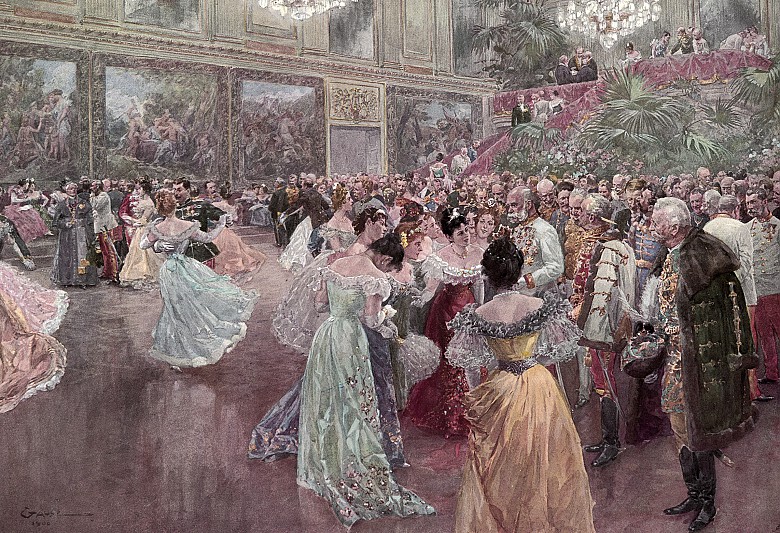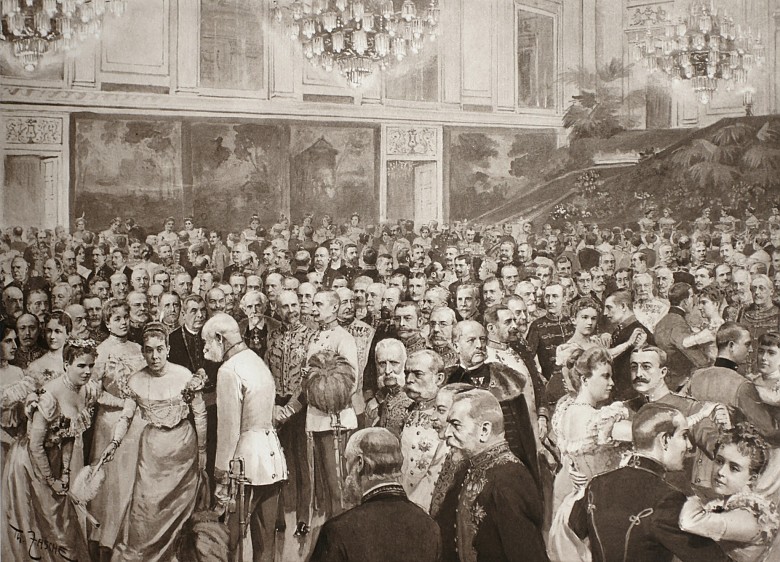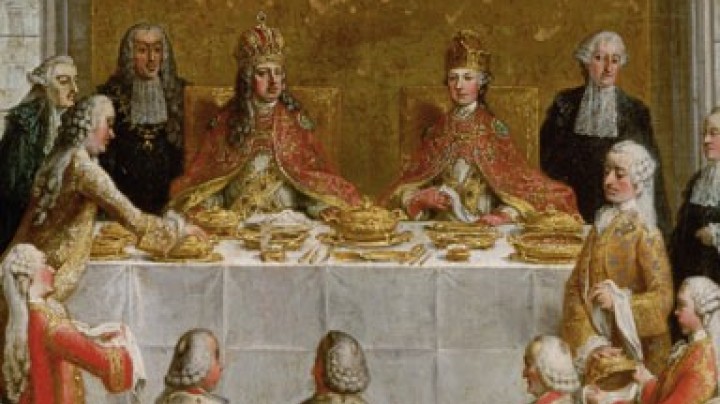The subtle distinction: Court Ball and Ball at Court
Every year towards the end of January the Viennese Court girded itself for the ball season; elaborate preparations were necessary for the Court to present itself in its full splendour. While the ‘Court Ball’ was the state ball of the Habsburg Monarchy, the ‘Ball at Court’ was the more socially exclusive event.
From: Nostitz-Rieneck, Georg: Briefe Kaiser Franz Josephs an Kaiserin Elisabeth (Vienna 1966), 342 ff. (quoted from: Das Zeitalter Kaiser Franz Josephs. 2. Teil: 1880-1916 Glanz und Elend. Exhibition catalogue, 1987, here 171).From a letter written by Franz Joseph to Elisabeth:
Today is the great Court Ball, which, as always, will be a rather arduous pleasure.
The ball was very crowded, particularly large numbers of ladies, dancing as well, not many pretty ones among them, not hot at all. I was in my room by 12.
Around two thousand guests were invited to the Court Ball: in addition to Court society as such (that is, the nobility who were ‘presentable at court’ and those who held ceremonial Court positions), high-ranking representatives from politics and the Church together with the serving officers of the Vienna garrison could attend. This represented a certain opening up of the otherwise extremely exclusive Court society.
Only the highest-ranking guests received a personal invitation from the Emperor; the rest of the court was ‘informed’ that their appearance was requested at the ball via an official bulletin. The date was traditionally fixed by the Empress; however, Elisabeth was known to put off this social duty, which she disliked intensely, for as long as she could.
The ball officially started at eight o’clock in the evening. At half-past eight the Obersthofmeister (the head of the Court household) reported to the Emperor that the guests had arrived. The cortège or train then formed itself, with the senior court officials taking up their positions according to rank around the imperial family. After the welcoming of the diplomatic corps, which could take up to an hour, the imperial family made its entrance at around half-past nine. It was not until this point that the court ball orchestra struck up.
Significantly, dancing was of only secondary importance at this ball, not least because there was hardly enough room for it due to the large number of guests. It was the social effect that was the focus of the event: the climax of the evening was the Cercle, when one exchanged a few words with Their Imperial Majesties. According to eye-witness accounts, conversation with Empress Elisabeth, who harboured deep reservations towards Court society, was rather slow and awkward. But until aristocratic young ladies, known as comtessen, had been presented to the Empress they could not ‘come out’ in society. It was a special honour for high-ranking ladies to be invited to take tea with the Empress, while the buffet was opened for the rest of the ball guests.
The Court Ball ended at midnight at the very latest when the imperial couple withdrew, which was the sign to the guests that it was time to leave. As a leaving present visitors received the famous Court bonbonnières, a coveted souvenir that was proudly shown off at home.
Two weeks later the ‘Ball at Court’ took place: here the crème de la crème of the aristocracy were amongst themselves, as only those who were ‘presentable at Court’ were eligible to attend and were invited personally. It was thus a correspondingly more intimate and aristocratic event: no more than 700 guests were invited, and they were given a fine dinner with service at table instead of a buffet.





















